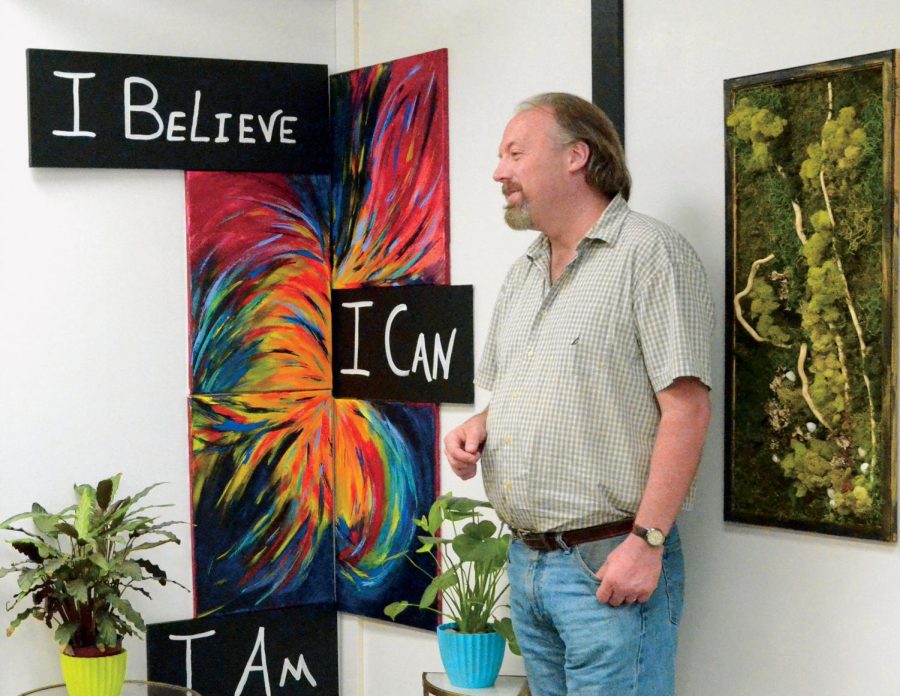Using art to educate people on struggles of recovery
Pieces aim to raise awareness, encourage public to ask for help
JAY SANI | THE DAILY EVERGREEN
Darrell Keim, director of the Latah Recovery Center, talks about the art pieces on the walls of the center Wednesday.
June 20, 2018
The Latah Recovery Center showcased an art installation during the Moscow Artwalk that helped community members understand how difficult the recovery process from mental health issues and addiction can be.
“There’s a deep connection between the recovery process and the use of art,” said Darrell Keim, director of the Latah Recovery Center. “So many people who are recovering use art to facilitate their process. Art is a way to express yourself and it allows you to work through things.”
Artist Roxanne Bohman, originally got involved with the center when it saved the life of a close friend of hers. Last year, she filled the center with flower boxes to make it more inviting and less intimidating to ask for help.
Bohman decided this year to work with the idea of the path to recovery from the low points to overcoming the adversity as suggested by Keim.
Bohman used several different types of artistic expression, as well as her design background, to represent this concept across the walls of the center. She incorporated paintings, flower wire, live plants and even an umbrella into the piece to add a 3D element.
The piece consisted of three separate but connected pieces that began at the darkest place of the recovery, followed by a piece portraying connection and its ability to help recovery, ended with a mantra of “I believe, I can, I am.”
“Everyone could connect with some part of the piece, whether they thought about their own personal journey or from seeing someone else’s,” Bohman said. “So many people liked the dark piece because almost everyone has been in a dark place that feels like almost a void of being surrounded in just black.”
Keim and Bohman decided to leave the piece untitled in order for it to connect with as many people as possible.
“The piece connected well with so many people,” Keim said, “because it showed the different stages of the process in a way that wasn’t defined and it meant something different to everyone.”
Bohman didn’t realize how well the piece worked until she watched the reactions to it.
“Several people had tears in their eyes and one person even hugged me,” Bohman said. “Almost everyone had some kind of strong connection to it and so many people had to come up and talk to me about it after.”
Bohman said, having not been through it herself, she had a different understanding of the recovery process after creating the installation. She said she hoped her work helped other people recognize that recovery is difficult to achieve on your own and that it’s alright to ask for help.
Bohman said the goal of the piece created was to raise awareness for the center and the people they are helping.
“The recovery center is a really good place for someone to go and become more of a whole person,” Bohman said. “Not a better person or something for someone else, but a whole person for themself.”









